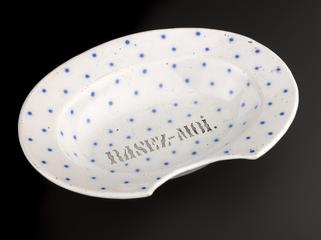
Lancet owned by Edward Jenner
- maker:
- Savigny and Company








Lancet belonging to Jenner, probably used for vaccination, by Savigny and Co., 1701-1800, English
Vaccination has saved countless lives, but has always been the subject of fierce debate. Why this, rather than another medical procedure? Historically there have been arguments about its safety and clinical worth, and large-scale protest against compulsory vaccination. But there are deeper issues at work too – about the body and belief.
At least four cuts would be made in the flesh of the arm using this sharp blade or lancet. Vaccine matter, containing a small amount of infectious particles, would then be smeared into the cuts. This was the method of vaccination in Britain during the 1800s, when infectious diseases killed tens of thousands of people. Was it painful? Often it was, but the outcome was the justification – establishing an immune response and eventual protection from the disease.
Religious objections were particularly strong. Christian groups viewed scarring the skin and the introduction of foreign particles as a violation of the sacred body made in God’s image. More recently, some Muslim communities have debated whether vaccine matter is haram, unlawful for Muslims to receive because it is not halal.
Could these beliefs be challenged? The medical profession and governments, give their reasons for supporting vaccination. Advocates from within religious traditions offer alternative interpretations of holy laws. Perhaps whether to trust in religion, medicine, or both will always be a point of personal opinion and debate?
Details
- Category:
- Public Health & Hygiene
- Collection:
- Sir Henry Wellcome's Museum Collection
- Object Number:
- A600037
- Materials:
- blade, steel and handle, tortoiseshell
- Measurements:
-
overall: 2 mm x 60 mm x 56 mm, .0028 kg
- type:
- lancet
- credit:
- Loan, Wellcome Trust




